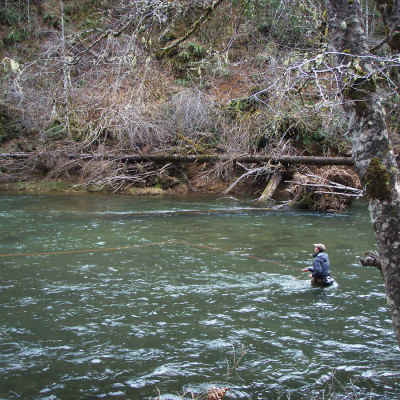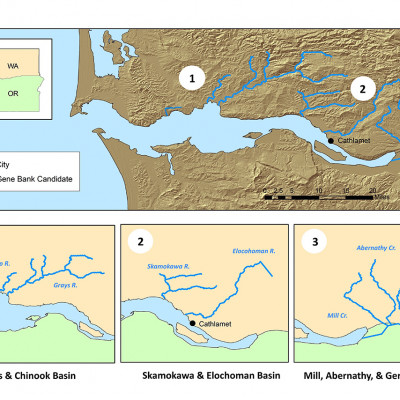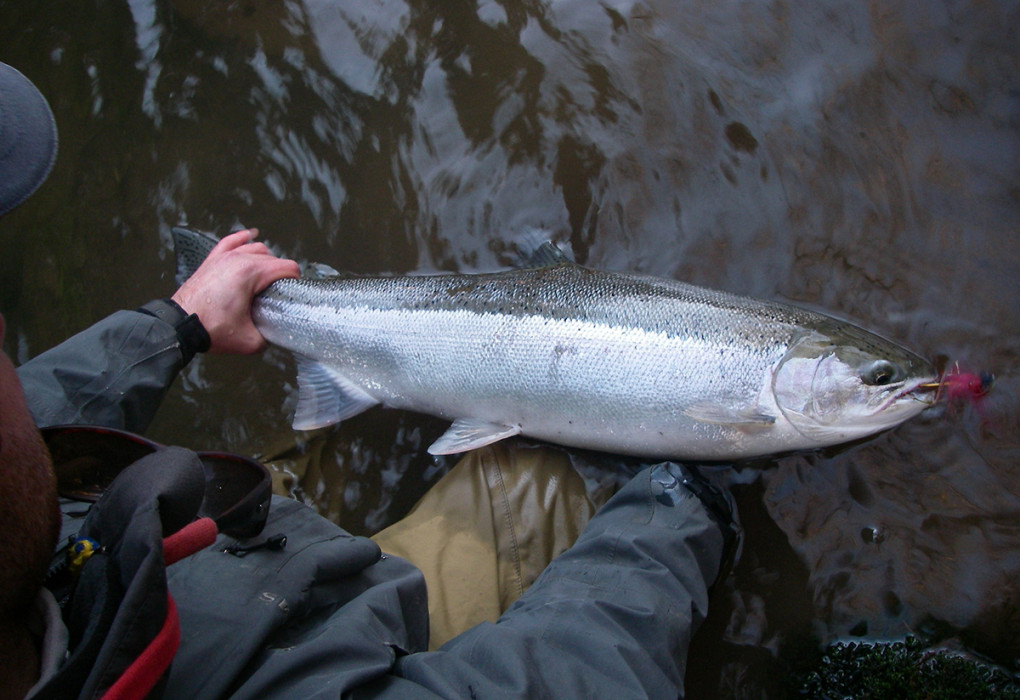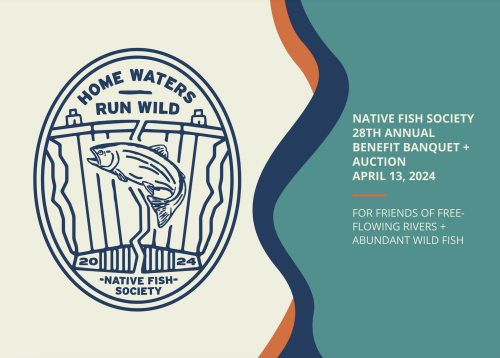Washington's Next Wild Steelhead Genebank
Cathlamet, WA | Over the past six months I have worked with a collection of anglers, state and federal fish biologists, and local landowners to help advise the Washington Department of Fish and Wildlife (WDFW) on selecting the next Wild Steelhead Gene Bank in the southwestern part of the state. The goal of our work group is to help designate an independent wild steelhead population from the Region 5 Coast Stratum as a Gene Bank, which includes the rivers that flow into the Columbia River near Cathlamet, WA: (1) Grays & Chinook rivers, (2) Skamokawa & Elochoman rivers, and (3) Mill, Abernathy & Germany creeks.
This effort is part of an ongoing process by WDFW to minimize the impacts of their steelhead hatchery programs on select wild steelhead populations across the state. Once a river is designated as a Gene Bank, all hatchery-origin steelhead releases are eliminated in that river(s), monitoring and evaluation programs are maintained or initiated, and input on sport fishing regulations is taken to meet the opportunity and conservation goals for all the rivers in the region.
Stakeholder work groups provide an important avenue for interested local parties to give feedback on which sufficiently abundant, self-sustaining population of wild steelhead should be designated as a Wild Steelhead Gene Bank. During monthly meetings, we learn about the administrative and biological rationale for minimizing the risks of hatchery steelhead (research shows that hatchery fish are less genetically diverse and can negatively impact wild populations through competition for food and habitat), cover the current status and trends of wild populations in each major population group (no steelhead in the Coast Stratum are ESA listed), and work towards helping identify a wild steelhead population to designate as the next Gene Bank. The benefits of this work group process have been numerous.
WILD STOCK GENE BANK
One area within each steelhead Distinct Population Segment where wild steelhead stocks are largely protected from the effects of hatchery programs. No releases of hatchery steelhead will occur in streams where spawning occurs or where rearing takes place. Fisheries can be conducted in these areas if wild steelhead management objectives and ESA regulations (if applicable) are met (SSMP, 2008).
First, participants are able to learn from the agency firsthand about the steps leading to the development of Gene Banks. In 2000, WDFW underwent a congressional review by the independent Hatchery Scientific Review Group to implement hatchery reform measures that would realign their conservation and recovery goals for salmon and steelhead across the state. As a result of this process, in 2008 WDFW adopted the Statewide Steelhead Management Plan (SSMP), which provided a framework for policies, strategies, and actions that would be undertaken in order to accelerate the recovery of wild steelhead while also supporting sustainable fisheries.
The SSMP established the concept of Wild Steelhead Gene Banks (or Wild Steelhead Management Zones) and these stakeholder work groups are the vehicles by which they have been implemented throughout WDFW’s Region 5. NFS’s Washougal River Steward Steve Lent and Mid-Columbia Regional Coordinator Peter Donahower were integral during the last two work groups that designated the Wind, East Fork Lewis, and North Fork Toutle/Green Rivers as Gene Banks. These rivers joined the Sol Duc River, which became the state’s first designation following the closure of the Snider Creek hatchery in 2013.
Second, these work groups facilitate cordial discussion on a contentious subject, which is often lacking in the hatchery reform discourse that currently exists in online forums and print publications. Our meetings consist of face-to-face interactions with individuals of different backgrounds and viewpoints, and presentations from WDFW and US Fish and Wildlife personnel, which bring all group members up to speed with the latest scientific research on hatchery reform. These meetings are open to the public, and local knowledge is at a premium to provide an on-the-ground perspective of how these changes might impact local communities.
Finally, these work groups set the stage for members of the public to actively participate in ongoing hatchery reform actions. The process adds local voices to agency decision-making and members have some ownership in helping inform management actions, which improves the overall transparency.
We will be making a final decision for the Coast Stratum in the coming months and our choice for the next Gene Bank is the Grays and Chinook rivers. The Grays and Chinook population is a strong candidate because it satisfies the abundance criteria, having met or exceeded its escapement goals for the last 15 years; has a high population viability score that will likely maintain productivity into the future; and the Grays River hatchery on the West Fork needs substantial infrastructure improvements that would be an excessive financial burden for the agency. The Mill, Abernathy, and Germany Creeks population is another good candidate, but US Fish and Wildlife is currently conducting a multiyear research project to try and minimize the risks of integrated hatchery programs on wild steelhead populations. Long-term goals of the Abernathy Research Program are to understand the genetic causes of hatchery domestication and will hopefully provide important insights to help improve hatchery practices by minimizing risks to wild steelhead across the Northwest.
Finally, the Skamokawa and Elochoman rivers have not had much public support for Gene Bank designation, and will likely continue to provide harvest oriented steelhead hatchery programs for local anglers. Therefore, the Grays and Chinook population is our preferred selection and you can follow the progress of our work group on the WDFW website: http://www.wdfw.wa.gov/about/advisory/crcsw/.
Washington is home to one of the largest hatchery fish manufacturing systems in the world, and setting aside key populations as Gene Banks makes sound biological sense in order to preserve the genetic integrity of some of the state’s most important wild steelhead populations. Native Fish Society is proud to be a partner in these efforts and we laud WDFW’s Region 5 for taking this proactive, transparent process to help protect and recover wild steelhead.



